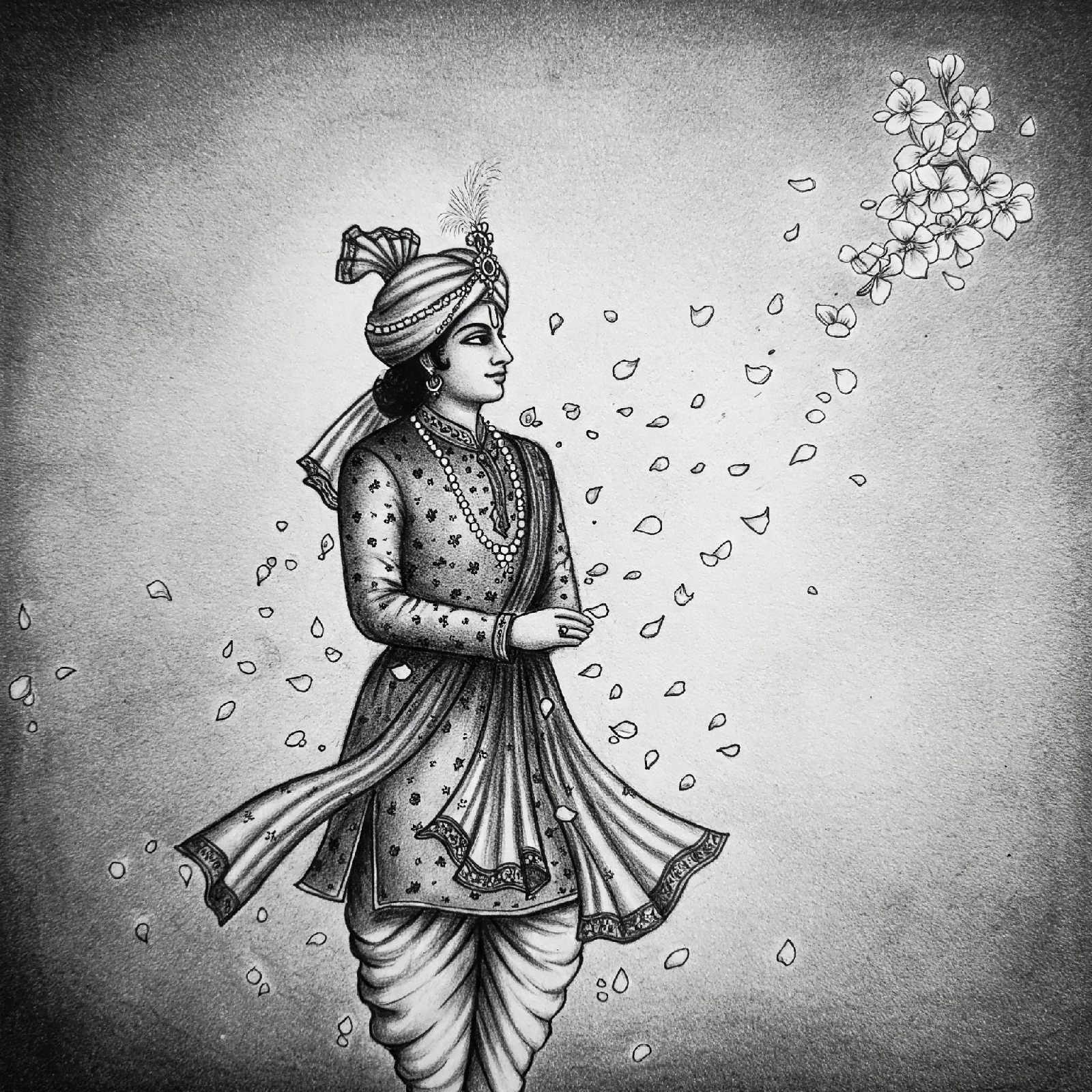The Boy, The Boar, and The Orange Tree
Once, in a quiet village tucked among the green paddy fields, a wild boar — the king of pigs — stormed into the fields and began tearing them apart. His tusks tore through the stalks, and the crops lay ruined in his wake. The villagers, enraged by the destruction, gathered together with sticks and bows and chased the beast. Among them was a young village boy with sharp eyes and steady hands. He loosed an arrow that struck the wild boar, wounding it.
The boar, though bleeding, escaped into the hills. The boy, determined to finish what he had begun, followed the trail of blood into the mountains. At the end of the trail, he came upon a dark cave hidden among the rocks. Cautiously, he peered inside.
To his surprise, he saw a divine figure seated in silence — it was the forest spirit
“Who are you, boy?” asked the sppirit. “What brings you here? Are you the one who wounded the boar?”
The boy trembled in fear. He dared not admit to chasing the wild creature. Thinking quickly, he bowed and said, “O Lord, I have come here to ask for your daughter’s hand in marriage.”
The spirit, pleased by the boy’s courage and manners, smiled. “Very well,” he said. “You may choose between my two daughters.”
The spirit presented his daughters. One was plain-faced but clothed in fine silks. The other, though dressed in tattered rags, had a radiant beauty that no garment could conceal. The boy chose the beautiful daughter and married her that very day. He placed her gently in a bamboo basket and carried her home with great joy in his heart.
When he arrived at his village, he set the basket down near the water-drain behind his house, for it was their custom to welcome a bride into the home only in the presence of kin and neighbors. He went out to gather them.
But in his absence, misfortune crept in. Hunchibili — an ugly, wicked woman — came across the basket. Jealousy burned in her heart when she saw the beautiful bride inside. With cruel hands, she dragged the maiden out and threw her into the river, letting her be carried away by the current. Then she slipped herself into the basket and closed the lid.
Soon, the boy returned with friends and family. With much joy, he opened the basket — only to find Hunchibili inside. Laughter rang out. “You spoke of beauty,” they mocked, “but what is this?”
The boy stood in confusion and shame, not understanding what had gone wrong. Yet, bound by custom and unsure of the truth, he accepted his fate and took Hunchibili as his wife.
But fate had not finished its tale.
The girl, lost in the river, was not gone. In time, she became a bamboo tree, tall and green, rooted near the water’s edge. From it sprouted tender shoots. One day, the boy came upon one and cut it for curry. As it boiled in the pot, a soft wailing rose from it:
“Hunchibili la la la law,
Hunchibili la la la la...”
Terrified, the boy cast the curry outside.
From the place where the curry was thrown, an orange tree soon grew. It bore a single orange — bright and beautiful. The boy was drawn to it, and he noticed something strange: whenever he came near, the orange moved closer. But if Hunchibili approached, it would sway away, hiding in the leaves.
One day, he picked the orange and kept it in a basket inside his house. He soon forgot about it.
But something strange began to happen. Each day, while the boy and Hunchibili were away at work in the fields, someone would enter their home. The boy’s bedding would be swept and laid with care, while Hunchibili’s mat would be smeared with filth and cow dung.
Puzzled and curious, the boy asked around, but no one claimed to know who was responsible. At last, he hid inside one day. When Hunchibili left for firewood, he saw a maiden step out of the orange — the very bride he had once brought home from the cave. She cleaned the house with care and laid waste upon the wicked woman’s bed. When she turned to return to the orange, the boy caught her by the wrist.
She told him everything — how she had been betrayed by Hunchibili and thrown into the river, how she had become the bamboo, then the orange.
Anger rose like a storm in the boy’s chest. He took up his dao (machete), sharpened it well, and waited.
That evening, Hunchibili returned, burdened with firewood. She asked him to help. The boy stepped out and, without a word, struck her down with his dao. Her blood soaked an arum plant nearby, and ever since, that arum turned red.
And so the tale goes: when a man sets eyes on a red arum, something stirs within him — a heat of rage he cannot understand.
Cultural Reflection
This folktale reflects the deep belief that truth, no matter how hidden, will always find its way back. The transformation of the true bride through elements of nature — bamboo, orange, and tree — shows how the natural world protects the innocent and reveals justice over time.
Hunchibili’s downfall warns against envy and cruelty, while the dao symbolizes the community’s sense of rightful justice. The red arum at the end ties folklore to everyday belief, showing how stories shape how people see the world around them.





Comments
Post a Comment